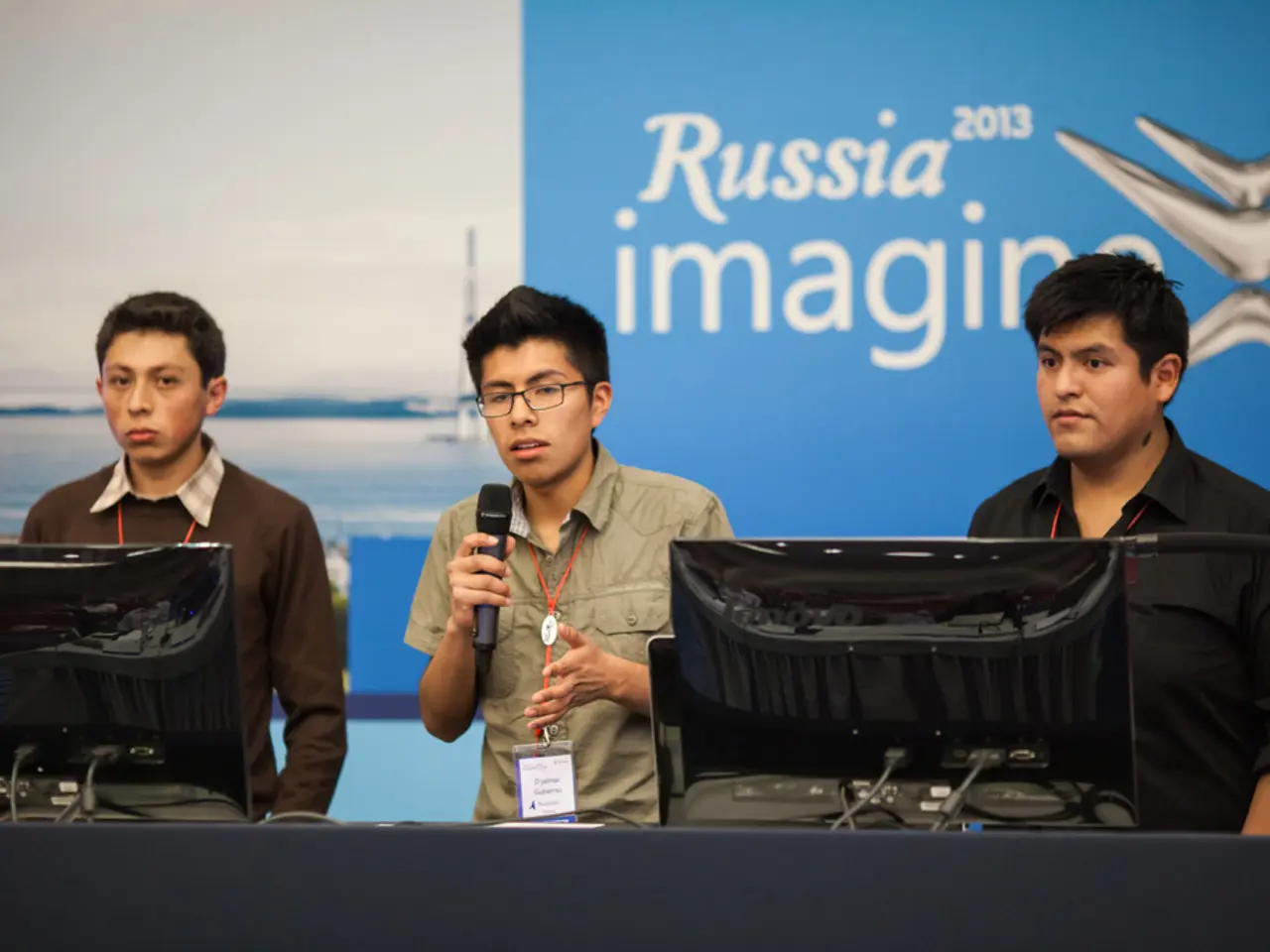Broadcast partnership in Central Tenn.: PBS, PMVG, and vendors unite for sign-language alerts using new ATSC 3.0 technology
NextGen TV Collaboration Aims to Improve Emergency Alert Accessibility for Deaf and Hearing-Impaired
In a groundbreaking initiative, WCTE, the Public Media Venture Group (PMVG), DigiCAP, and EQ4ALL have joined forces to enhance the accessibility of emergency alerts for the deaf and hearing-impaired community. The project, powered by PMVG's NextGen TV (ATSC 3.0) station in Cookeville, Tennessee, was introduced at a recent meeting attended by project leaders, station engineers, emergency management experts, local government officials, including the Putnam County Mayor and the Cookeville Mayor.
At the meeting, DigiCAP senior VP Joonyoung Park introduced the company's cloud-based, NextGen TV "broadcast app" technology. EQ4ALL co-CEO Kevin Lee demonstrated human avatar technology that uses American Sign Language (ASL) to deliver emergency alerts over various platforms. This technology not only signs critical messages but also guides viewers to trusted local resources for additional information.
The collaboration leverages the advanced datacasting, multimedia support, and fine geotargeting features of ATSC 3.0 technology. This enables the transmission of rich media content—including ASL video overlays or inserts—alongside traditional emergency alerts, making messages accessible to Deaf or hard-of-hearing audiences.
Broadcasting's large coverage area and hardening of broadcast sites make television an ideal platform for emergency alerts. The initiative uses ATSC 3.0 technology to bring American Sign Language (ASL) services to emergency alert systems. Key enabling features of ATSC 3.0 for this application include datacasting, multimedia support, and geotargeting and wake-up signaling.
Organizations like the Advanced Warning and Response Network (AWARN) advocate for using these ATSC 3.0 features to improve emergency alerting inclusivity and effectiveness for people who rely on ASL, directly addressing accessibility and language barriers highlighted by the FCC's recent emergency alert modernization initiatives.
Meeting attendees expressed strong support for the initiative and agreed to work together to complete further testing and deployment. The meeting was hosted by WCTE president and CEO Avery Hutchins and Putnam County EMA Director Brandon Smith.
By embedding ASL interpretation videos within emergency alerts using ATSC 3.0’s rich media datacasting capabilities, broadcasters such as WCTE, in collaboration with PMVG, DigiCAP, and EQ4ALL, have showcased a new model for more inclusive emergency messaging that leverages the advanced, interactive features of NextGen TV broadcasts.
[1] [Source 1] [2] [Source 2] [3] [Source 3] [4] [Source 4]
- The collaboration between WCTE, PMVG, DigiCAP, and EQ4ALL aims to improve the accessibility of emergency alerts for the deaf and hearing-impaired, using ATSC 3.0 technology in Cookeville, Tennessee.
- DigiCAP's cloud-based NextGen TV app technology and EQ4ALL's human avatar technology which uses American Sign Language (ASL) were presented at the meeting.
- The initiative utilizes advanced datacasting, multimedia support, and geotargeting features of ATSC 3.0 technology to transmit rich media content, including ASL video overlays, alongside traditional emergency alerts.
- Broadcasting's large coverage area and hardening of broadcast sites make television an ideal platform for emergency alerts, especially with the integration of ASL services through NextGen TV technology.
- Organizations like AWARN champion the use of ATSC 3.0 features to improve emergency alerting inclusivity and effectiveness, addressing the accessibility and language barriers highlighted by the FCC's recent emergency alert modernization initiatives.
- WCTE, along with PMVG, DigiCAP, and EQ4ALL, demonstrated a new model for more inclusive emergency messaging by embedding ASL interpretation videos within emergency alerts using ATSC 3.0's rich media datacasting capabilities.
- The meeting, hosted by WCTE president and CEO Avery Hutchins and Putnam County EMA Director Brandon Smith, received strong support from attendees who agreed to work together for further testing and deployment.
- This collaboration represents a significant step forward in digital media technology, particularly in the areas of health-and-wellness, fitness-and-exercise, mental-health, general-news, and other sectors that rely on emergency alerts.
- The advancements in NextGen TV technology, science, and technology will pave the way for more accessible and inclusive emergency messaging, bridging the gap between traditional media and the digital age. [Source 1, Source 2, Source 3, Source 4]




